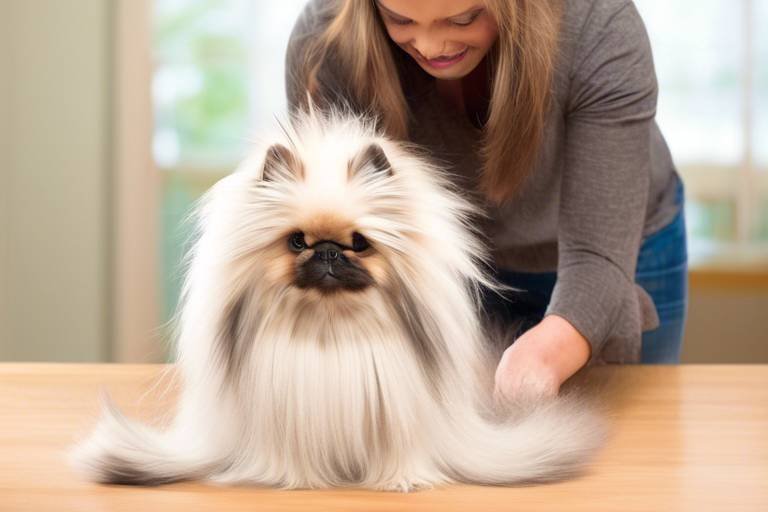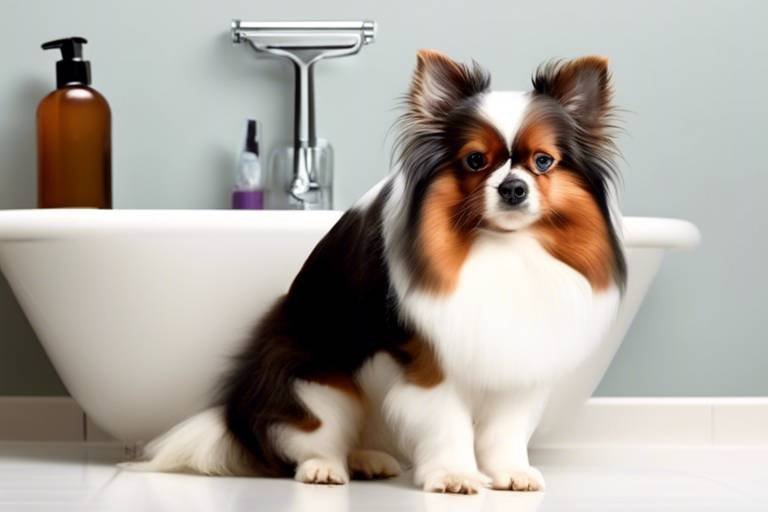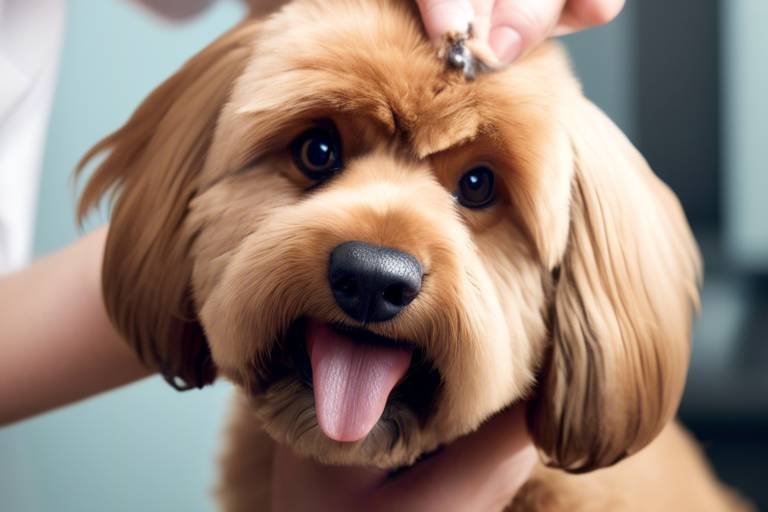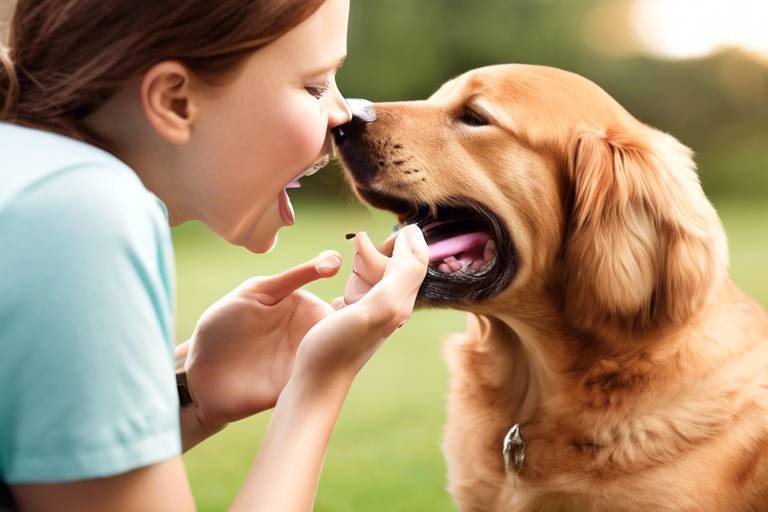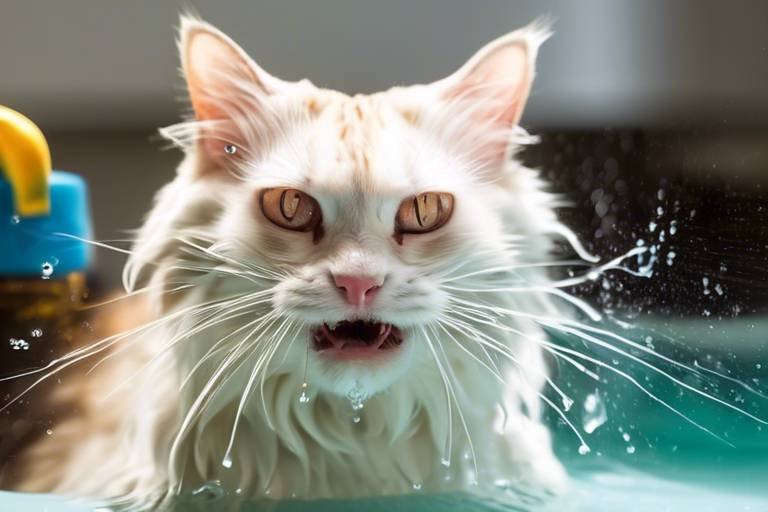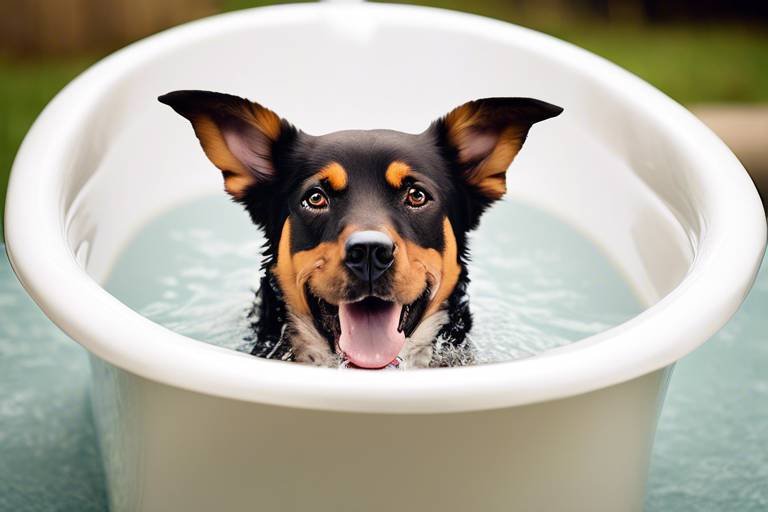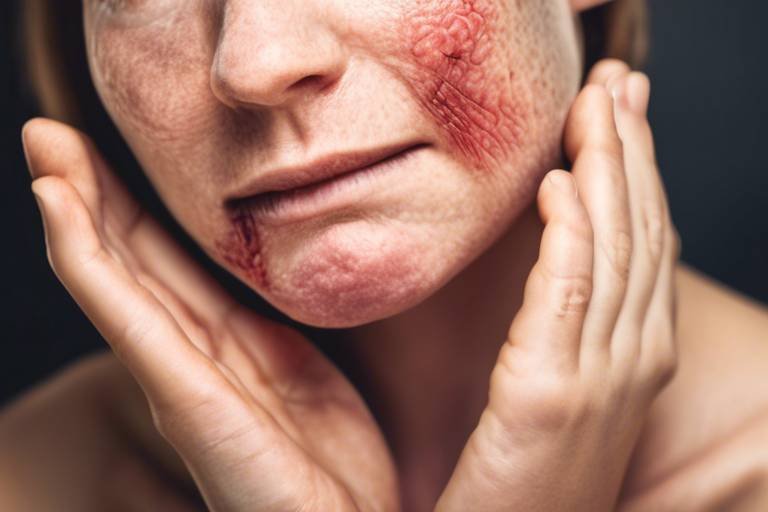The Importance of Grooming for Pet Comfort
When it comes to our furry friends, grooming is often seen as just another chore on the to-do list. But let me tell you, it’s so much more than that! Grooming is a crucial aspect of pet care that goes beyond keeping them looking cute and fluffy. It’s about ensuring their overall well-being and comfort. Just like we feel refreshed after a nice shower or haircut, our pets also experience a sense of relief and happiness when they are groomed regularly.
Imagine for a moment a dog with a tangled coat or a cat with matted fur. Just thinking about it makes you cringe, right? These conditions can lead to discomfort, skin issues, and even behavioral problems. Grooming is like a spa day for pets—it helps them feel their best, inside and out. But what exactly does pet grooming entail? It includes brushing, bathing, nail trimming, and even ear cleaning. Each of these activities plays a vital role in maintaining your pet's health and happiness.
In a world where we are constantly on the go, it’s easy to overlook the importance of grooming. However, it’s essential for every pet owner to understand that regular grooming is not just about aesthetics; it’s about creating a bond with your pet and being proactive about their health. Think of it as a preventative measure, much like taking your pet for regular vet check-ups. By incorporating grooming into your pet care routine, you are not only enhancing their physical appearance but also contributing to their emotional well-being.
So, whether you have a fluffy Golden Retriever or a sleek Siamese cat, grooming is a non-negotiable part of pet ownership. It’s an opportunity to check for any unusual lumps or bumps, monitor their skin condition, and even bond with your furry companion. The next time you pick up that brush or nail clipper, remember that you’re not just grooming; you’re investing in your pet’s comfort and happiness.
- How often should I groom my pet? It depends on the breed and coat type. Generally, long-haired breeds require more frequent grooming than short-haired ones.
- Can I groom my pet at home? Absolutely! Many grooming tasks can be done at home, but some pets may require professional grooming for specific needs.
- What tools do I need for grooming? Essential tools include brushes, combs, nail clippers, and pet-safe shampoo. The specific tools will depend on your pet's coat type.
- How can I make grooming a positive experience for my pet? Start slowly, use treats, and create a calm environment to help your pet associate grooming with positive experiences.

Understanding Pet Grooming
When you think about grooming, you might picture a fluffy dog getting a stylish haircut or a cat being pampered with a gentle brush. But grooming is much more than just a beauty routine; it’s a crucial part of your pet’s overall health and happiness. Just like we humans enjoy feeling fresh and clean, our furry friends thrive when they are well-groomed. Grooming encompasses a range of activities including bathing, brushing, nail trimming, and ear cleaning, all of which contribute to a pet's well-being.
One of the biggest misconceptions is that grooming is only necessary for long-haired breeds. In reality, every pet, regardless of their coat type, benefits from regular grooming. Think of it this way: grooming is like a health check-up for your pet. It allows you to inspect their body for any unusual lumps, bumps, or signs of skin irritation. Plus, it’s a wonderful opportunity to bond with your pet. Imagine spending quality time with your furry companion while giving them the attention they crave!
So, why is grooming fundamental for every pet owner to understand? Here are a few key points:
- Prevention of Health Issues: Regular grooming can help prevent skin infections, matting, and other health problems.
- Improved Comfort: A well-groomed pet is a comfortable pet. Removing loose fur and debris can make a significant difference in their comfort level.
- Behavioral Benefits: Regular grooming can reduce anxiety and improve your pet's behavior by creating a calming routine.
Moreover, grooming is not just a chore; it can be an enjoyable experience for both you and your pet. Picture this: a sunny afternoon, you and your dog lounging in the backyard, sharing cuddles while you brush their coat. It’s moments like these that strengthen the bond between you and your furry friend. Not to mention, grooming helps you keep an eye on your pet’s health, allowing for early detection of any potential issues.
In summary, understanding pet grooming is essential for every pet owner. It goes beyond aesthetics and plays a vital role in ensuring your pet’s health and happiness. So, the next time you think about grooming, remember that it’s an act of love that keeps your furry companion feeling their best!

Health Benefits of Regular Grooming
When it comes to our furry friends, grooming is so much more than just a beauty routine—it's a crucial part of their overall health and happiness. Regular grooming sessions can be a game-changer for your pet, providing a plethora of health benefits that every pet owner should be aware of. Think of grooming as a spa day for your pet, where they not only look good but feel good too. It’s like giving them a warm hug that says, “I care about you!”
One of the most significant advantages of regular grooming is its impact on skin health. Just like humans, pets can suffer from various skin issues, including irritations and infections. By regularly brushing your pet's coat, you help to remove dirt, debris, and dead hair that can accumulate and cause problems. Moreover, brushing stimulates the skin's natural oils, promoting a shiny, healthy coat that reflects your pet's vitality. A well-groomed coat isn't just about aesthetics; it’s a sign of a healthy pet.
Additionally, grooming allows for the early detection of health problems. When you groom your pet, you're not just making them look fabulous; you're also taking the time to inspect their skin and coat for any unusual lumps, bumps, or irritations. This can be particularly important for identifying issues such as hot spots, allergies, or even more serious conditions like tumors. Regular grooming can provide you with the opportunity to catch these issues early, potentially saving your pet from discomfort and ensuring they receive timely veterinary care.
A well-groomed coat is essential for a pet's skin health. Grooming helps to maintain not just the appearance of your pet’s fur but also its condition. For instance, a shiny coat is often a reflection of good health, while a dull or greasy coat can indicate underlying health issues. Regular grooming can prevent problems such as:
- Skin irritations: Regular brushing helps to remove allergens and irritants that can lead to skin problems.
- Infections: Keeping the coat clean and free from debris reduces the risk of bacterial or fungal infections.
Matting can be a significant concern, especially for long-haired breeds. It can cause discomfort and pain, leading to skin irritation and even infections. Regular grooming helps to prevent matting by keeping the fur untangled and manageable. If you notice mats forming, it’s essential to address them promptly. Using a slicker brush or a dematting tool can help you tackle this issue effectively. Remember, prevention is key! A little grooming each week can save you a lot of trouble down the road.
Another critical aspect of grooming is its role in parasite control. Fleas and ticks are not just annoying; they can lead to serious health problems for your pet. Regular grooming sessions allow you to inspect your pet’s coat closely, making it easier to spot these unwanted guests. If you find any parasites, prompt action can be taken to eliminate them, keeping your pet healthy and comfortable. Plus, a clean coat is less inviting to these pests!
In summary, grooming is not just about making your pet look good; it's a vital part of their health care routine. From promoting skin and coat health to preventing matting and controlling parasites, the benefits of regular grooming are undeniable. So, the next time you pick up that brush, remember that you’re doing so much more than just styling your pet’s fur—you’re investing in their overall well-being!
Q: How often should I groom my pet?
A: The frequency of grooming depends on your pet's breed, coat type, and lifestyle. Generally, long-haired breeds require grooming every few days, while short-haired breeds may only need grooming once a week.
Q: Can grooming help with shedding?
A: Yes! Regular grooming helps to remove loose fur and reduces shedding around your home. It also helps to distribute natural oils in your pet's coat, promoting a healthier appearance.
Q: What tools do I need for grooming?
A: Essential grooming tools include brushes, combs, nail clippers, and grooming wipes. The specific tools you need will depend on your pet's coat type and grooming requirements.
Q: Is grooming stressful for pets?
A: Some pets may feel anxious during grooming, especially if they are not used to it. Gradually introducing grooming sessions and using positive reinforcement can help make the experience more enjoyable for them.
Skin and Coat Health
When it comes to our furry friends, a well-groomed coat is not just about looking good; it's a fundamental aspect of their overall health. A shiny, clean coat is a reflection of a pet's internal well-being. Regular grooming plays a pivotal role in maintaining skin and coat health, preventing a myriad of issues that can arise from neglect. Just think about it: would you want to walk around with tangled hair or a dirty shirt? Our pets feel the same way!
One of the most significant benefits of grooming is that it helps to remove dirt, debris, and dead hair that can accumulate in a pet's coat. This not only keeps them looking sharp but also allows their skin to breathe. A clean coat is less prone to irritation and infections, which can lead to uncomfortable scratching and biting. Regular brushing can also help distribute natural oils throughout the coat, resulting in a softer, shinier appearance. Think of these oils as nature's conditioner, keeping your pet's fur in tip-top shape.
Moreover, grooming is a fantastic opportunity for pet owners to check for any abnormalities on their pet's skin. During grooming sessions, you might discover signs of allergies, hot spots, or even lumps that require veterinary attention. Early detection is key, and grooming provides that essential moment to bond with your pet while keeping an eye on their health. It's a win-win situation!
Let’s not forget about the types of coats that require specific grooming techniques. For example, long-haired breeds like Yorkshire Terriers or Persian Cats need regular brushing to prevent tangles and matting, which can lead to skin problems. On the other hand, short-haired breeds, like Beagles or Boxers, may require less frequent grooming but still benefit from occasional brushing to remove loose hair and stimulate the skin. Here’s a quick look at some common coat types and their grooming needs:
| Breed Type | Coat Type | Grooming Frequency |
|---|---|---|
| Yorkshire Terrier | Long-haired | Every 2-3 days |
| Beagle | Short-haired | Weekly |
| Persian Cat | Long-haired | Daily |
| Boxer | Short-haired | Every 2 weeks |
In conclusion, prioritizing skin and coat health through regular grooming not only enhances your pet's appearance but also significantly contributes to their overall health and happiness. So, the next time you pick up that brush or comb, remember that you’re doing more than just beautifying your furry friend; you’re actively participating in their health journey. After all, a happy pet is a healthy pet!
Q: How often should I groom my pet?
A: The frequency of grooming depends on your pet's breed and coat type. Long-haired breeds may need daily grooming, while short-haired breeds can be groomed weekly.
Q: What tools do I need for grooming?
A: Essential grooming tools include brushes, combs, nail clippers, and shampoos. The type of tools needed may vary based on your pet's coat type.
Q: Can grooming help with shedding?
A: Yes! Regular grooming helps remove loose hair and reduces shedding. It also prevents matting and keeps the coat healthy.
Dealing with Matting
Matting is a common issue that many pet owners encounter, especially those with long-haired breeds. It occurs when the fur becomes tangled and knotted, leading to areas of dense fur that can trap dirt, moisture, and even parasites. Not only does matting look unsightly, but it can also cause significant discomfort and pain for your furry friend. Imagine wearing a sweater that's two sizes too small—this is how your pet feels when their coat is matted! Regular grooming is essential to prevent this uncomfortable situation.
One of the best ways to deal with matting is through consistent grooming. By incorporating grooming into your pet's routine, you can help to keep their coat healthy and free of tangles. If you notice any mats starting to form, it’s crucial to address them promptly. Ignoring them can lead to more severe problems, such as skin infections or the need for professional grooming interventions.
When you encounter mats, here are some effective techniques to help you manage them:
- Use the Right Tools: Invest in a quality dematting comb or a slicker brush. These tools are designed specifically to tackle tangles without pulling too harshly on your pet's skin.
- Be Gentle: Always work slowly and gently when you encounter a mat. Start at the edges and work your way in to minimize discomfort. Pulling too hard can cause pain and distress.
- Consider Detangling Spray: A detangling spray can make the process smoother. These sprays help to loosen the hair and make it easier to comb through the mats.
If a mat is particularly stubborn, you might need to cut it out. However, this should be done with caution. Use blunt-ended scissors to avoid injuring your pet. If you're unsure, it’s best to consult a professional groomer who can safely remove the mats without causing harm.
Prevention is always better than cure. Regular grooming sessions can significantly reduce the likelihood of matting. Aim for a grooming schedule that suits your pet’s coat type. For instance, long-haired breeds may require grooming every few days, while shorter-haired breeds might only need it weekly.
Lastly, keep an eye on your pet's environment. If they frequently play in areas with grass, bushes, or water, they may be more prone to matting. Regularly checking and grooming their coat after such activities can help maintain its health and appearance.
Q: How often should I groom my pet to prevent matting?
A: It depends on your pet's breed and coat type. Long-haired breeds may require grooming every few days, while short-haired breeds might only need weekly grooming.
Q: Can I remove mats myself, or should I take my pet to a groomer?
A: You can remove mats yourself if you have the right tools and approach it gently. However, for severe mats or if you're unsure, it's best to consult a professional groomer.
Q: What tools are best for dealing with mats?
A: A dematting comb, slicker brush, and detangling spray are excellent tools for managing mats effectively.
Q: Are mats harmful to my pet?
A: Yes, mats can cause discomfort, pain, and even skin infections if not addressed promptly. Regular grooming helps prevent these issues.
Parasite Control
When it comes to keeping our furry friends happy and healthy, one of the most overlooked aspects is . Regular grooming plays a pivotal role in identifying and eliminating these pesky invaders, such as fleas and ticks, that can wreak havoc on your pet's comfort and health. Imagine your pet as a knight in shining armor, ready to take on the world, but what if that armor is tarnished by unwanted guests? That's where grooming comes in to save the day!
During grooming sessions, you have the perfect opportunity to inspect your pet's skin and coat thoroughly. This means looking for any signs of parasites, which can often go unnoticed until they become a bigger problem. Fleas, for instance, can cause severe itching and discomfort, leading to skin infections if left untreated. Ticks, on the other hand, can transmit diseases that pose serious health risks. By making grooming a regular part of your pet care routine, you can catch these issues early, preventing them from escalating into more significant health concerns.
So, how does grooming help in parasite control? Here are some key points:
- Early Detection: Regularly brushing and bathing your pet allows you to spot fleas, ticks, and other parasites before they multiply.
- Removing Parasites: Grooming helps remove any existing parasites from your pet's coat, reducing their numbers significantly.
- Skin Health: A clean and well-groomed coat is less appealing to parasites, making it less likely for them to take up residence.
Additionally, incorporating grooming into your pet's routine can also help you establish a bond with them. Think of it as a spa day for your pet. They get pampered, and you get quality time together. The more comfortable they are with being handled, the easier it becomes to check for parasites or other skin issues. Plus, it can turn into a fun game where you reward them with treats for being such good boys and girls!
To sum it up, grooming is not just about keeping your pet looking good; it's a critical component of their overall health. By regularly grooming your pet, you are taking proactive steps towards , ensuring they remain happy, healthy, and free from the discomfort caused by fleas, ticks, and other unwanted guests. So, grab those brushes and combs, and let the grooming adventures begin!
Here are some common questions pet owners have regarding parasite control through grooming:
- How often should I groom my pet to control parasites? - It's best to groom your pet at least once a week, but more frequent grooming may be necessary for certain breeds or during peak flea and tick seasons.
- What signs should I look for when checking for parasites? - Look for excessive scratching, redness or irritation on the skin, or the presence of flea dirt (small black specks) in your pet's fur.
- Can grooming alone prevent parasite infestations? - While grooming is essential, it's also important to use preventive treatments recommended by your veterinarian for comprehensive parasite control.
Behavioral Benefits of Grooming
Grooming your pet is not just about keeping them looking fabulous; it has profound behavioral benefits that can enhance your furry friend's overall well-being. Imagine this: a dog that is regularly groomed is not only cleaner but also happier and more relaxed. Just like humans, pets thrive on routine and familiarity. Regular grooming sessions create a predictable schedule that can help reduce anxiety and stress in your pet. Have you ever noticed how your pets seem to enjoy the attention they receive during grooming? This time spent together strengthens the bond between you and your pet, making them feel loved and secure.
Moreover, grooming can serve as a form of positive reinforcement. When you groom your pet, you're not just maintaining their physical appearance; you're also providing them with a sense of comfort and care. This can lead to improved behavior, as pets often respond positively to the affection and attention they receive during these sessions. Think of grooming as a mini spa day for your pet—who wouldn’t feel good after a nice pampering session?
Interestingly, regular grooming can also help in identifying behavioral issues early on. For instance, if your pet becomes unusually agitated during grooming, it might indicate discomfort or pain somewhere in their body. This early detection can lead to quicker veterinary intervention, ensuring your pet remains happy and healthy. Additionally, the grooming process can help desensitize pets to touch, which is particularly beneficial for those who may be skittish or anxious.
Here’s a quick look at some behavioral benefits of grooming:
- Reduces Anxiety: Regular grooming can help alleviate stress and anxiety in pets.
- Strengthens Bond: Spending quality time during grooming enhances the relationship between pet and owner.
- Improves Behavior: Pets that are groomed regularly tend to exhibit better behavior overall.
- Identifies Issues: Grooming can help detect potential health problems early.
In conclusion, grooming is a multifaceted activity that goes beyond mere aesthetics. It plays a crucial role in your pet's behavioral health, offering them comfort, security, and a chance for you to bond. So the next time you grab that brush or comb, remember that you're not just making your pet look good—you're also making them feel good. It's a win-win situation that every pet owner should embrace wholeheartedly!
Here are some common questions pet owners have regarding grooming and its behavioral benefits:
- How often should I groom my pet? It depends on the breed and coat type. Generally, long-haired pets require more frequent grooming than short-haired ones.
- Can grooming help with my pet's anxiety? Yes! Regular grooming can provide a sense of routine and comfort, reducing anxiety levels.
- What should I do if my pet dislikes grooming? Start slowly and associate grooming with positive experiences, such as treats or playtime.
- Are there specific tools I should use for grooming? Yes, the right tools depend on your pet's coat type. Brushes, combs, and clippers vary for different needs.

Tools and Techniques for Effective Grooming
When it comes to grooming your beloved pet, having the right tools and techniques can make all the difference. Just like a chef needs the right knives to create a culinary masterpiece, pet owners need appropriate grooming tools to ensure their furry friends look and feel their best. Grooming is not just about making your pet look pretty; it's an essential part of their health and happiness. So, let’s dive into the must-have tools and techniques that every pet owner should know!
First off, let’s talk about the basic grooming tools. A good quality brush is essential for every pet owner. Depending on your pet's coat type, you might need a slicker brush, bristle brush, or a pin brush. For example, long-haired breeds benefit greatly from a slicker brush that helps remove tangles and mats. On the other hand, short-haired pets often require a bristle brush to keep their coats shiny and healthy. You see, choosing the right brush is like picking the right outfit; it needs to fit well to look good!
Another important tool in your grooming arsenal is the comb. Combing is crucial for detangling and removing loose fur. A wide-toothed comb is perfect for those with thick or curly coats, while a fine-toothed comb works wonders for finer hair. Remember, consistency is key! Regularly combing your pet not only keeps their coat looking fabulous but also helps in spotting any unusual lumps or skin issues early on.
Now, let’s not forget about nail clippers. Keeping your pet’s nails trimmed is vital for their comfort and mobility. Overgrown nails can lead to painful walking and even joint issues. If you’re nervous about clipping nails, consider investing in a nail grinder. It’s a gentler option that can help you avoid the dreaded 'quick'—the sensitive part of the nail that can bleed if cut too short. Think of it as a mini-pedicure for your pet!
When it comes to bathing your pet, using the right shampoo is crucial. Always choose a product specifically designed for pets, as human shampoos can be too harsh for their skin. Look for gentle, hypoallergenic formulas that will cleanse without stripping essential oils. Bathing your pet should be a pleasant experience, not a chore, so make sure to have everything ready beforehand—think of it as prepping for a spa day!
Now that we’ve covered the tools, let’s move on to some effective grooming techniques. One of the best practices is to create a grooming routine. Set aside time each week to brush, comb, and inspect your pet thoroughly. This not only keeps them clean but also helps strengthen the bond between you and your furry friend. Just like a good workout routine, consistency yields the best results!
Additionally, familiarize yourself with the specific grooming needs of your pet’s breed. Some breeds require more frequent grooming than others. For instance, a Poodle's curly coat needs regular grooming to prevent matting, while a Beagle's short coat requires less maintenance. Understanding these needs is like knowing the playbook for your favorite sport; it helps you stay ahead in the game!
Finally, always approach grooming sessions with a positive attitude. Use treats and praise to encourage your pet during grooming. This will help them associate grooming with positive experiences rather than a chore. Remember, patience is key! If your pet gets anxious, take breaks and reassure them. After all, grooming should be a bonding experience, not a battle!
Q: How often should I groom my pet?
A: The frequency of grooming depends on your pet's breed and coat type. Long-haired breeds may need grooming several times a week, while short-haired breeds might only need it once a month.
Q: Can I use human shampoo on my pet?
A: No, human shampoo can be too harsh for pets. Always use a shampoo specifically formulated for animals.
Q: What should I do if my pet hates being groomed?
A: Start slow by introducing grooming tools gradually and using treats to create a positive association. If your pet continues to resist, consider seeking help from a professional groomer.
Grooming Tools Overview
When it comes to grooming your furry friend, having the right tools is absolutely crucial. Think of grooming tools as your pet's personal spa essentials. Just as we use different products for our hair, skin, and nails, pets also require specific tools tailored to their needs. The market is flooded with options, and while it may seem overwhelming at first, understanding which tools are best suited for your pet can make all the difference in their grooming experience.
First up, let's talk about brushes. Brushes come in various shapes and sizes, each designed for different coat types. For instance, a slicker brush is perfect for removing loose fur and preventing matting in long-haired breeds, while a bristle brush works wonders on short-haired pets by distributing natural oils, leading to a shiny coat. It's essential to choose the right brush; otherwise, you might end up causing discomfort rather than providing a pampering session.
Next, we have combs. Combs are excellent for detangling and can help you spot any skin issues that may be lurking beneath the surface. A wide-toothed comb is ideal for thick or curly coats, while a fine-toothed comb is great for smoothing out finer hair. The combination of both brushes and combs ensures that your pet's coat remains healthy and free from tangles.
Don't forget about grooming clippers and scissors! These tools are vital for maintaining your pet's coat length and shape. If you have a breed that requires regular trims, investing in a quality clipper can save you a trip to the groomer. Additionally, scissors are perfect for those delicate areas around the eyes and paws, ensuring a neat and tidy appearance without risking injury.
Another important tool is the grooming mitt. These handy gloves not only make it easy to remove loose fur but also provide a soothing massage for your pet. Many pets love the sensation of being petted, and using a grooming mitt can turn grooming time into a bonding experience. Plus, they're super easy to clean!
To help you navigate the world of grooming tools, here's a quick overview of essential grooming tools:
| Tool | Purpose |
|---|---|
| Brush | Removes loose fur and prevents matting |
| Comb | Detangles fur and checks for skin issues |
| Clippers | Maintains coat length and shape |
| Scissors | Trims delicate areas |
| Grooming Mitt | Removes fur while providing a massage |
In summary, investing in the right grooming tools not only enhances your pet's appearance but also contributes to their overall health and comfort. Regular grooming sessions equipped with the right tools can turn a mundane chore into an enjoyable experience for both you and your pet. Remember, a well-groomed pet is a happy pet!
Q: How often should I groom my pet?
A: The frequency of grooming depends on the breed and coat type. Long-haired breeds typically require grooming several times a week, while short-haired pets may only need it once a week.
Q: Can I use human grooming tools on my pet?
A: It's best to use tools specifically designed for pets. Human grooming tools may not be suitable and could cause discomfort or injury.
Q: What if my pet doesn't like being groomed?
A: Start slowly and make grooming a positive experience with treats and praise. Gradually introduce them to the tools and techniques to help them feel more comfortable.
Grooming Techniques for Different Breeds
When it comes to grooming, one size definitely does not fit all. Each breed of pet has its own unique coat type, skin sensitivities, and grooming requirements. Understanding these differences is crucial for ensuring that your furry friend looks their best and feels comfortable. For instance, long-haired breeds like the Yorkshire Terrier or Persian cat require regular brushing to prevent tangles and mats, while short-haired breeds like the Beagle or Boxer may only need occasional brushing to remove loose hairs. Grooming is not just about aesthetics; it's about maintaining healthy skin and coat, which can vary significantly from breed to breed.
For dogs, the grooming frequency and techniques can differ greatly based on their coat type. For example:
- Curly Coats: Breeds like the Poodle or Portuguese Water Dog have curly coats that require regular clipping and brushing to prevent matting. It's essential to use a slicker brush for these breeds, combined with regular visits to a professional groomer.
- Double Coats: Breeds such as the Golden Retriever or Siberian Husky have a thick undercoat and a longer outer coat. They benefit from seasonal grooming to remove dead hair and undercoat, especially during shedding seasons.
- Short Coats: Breeds like the Dalmatian or French Bulldog have short hair that requires less maintenance. A simple weekly brushing with a rubber curry brush can help remove loose hair and distribute natural oils.
It’s also important to consider the grooming needs of cats. Long-haired breeds, such as the Maine Coon or Ragdoll, require daily brushing to keep their coats free from tangles and mats, while short-haired breeds like the American Shorthair might only need brushing once a week. Regular grooming not only helps to maintain a beautiful coat but also reduces the chances of hairballs, which can be a common issue for cats.
Additionally, understanding the specific grooming techniques for different breeds can enhance the bonding experience between you and your pet. For example, using a gentle approach and offering treats during grooming can help anxious pets feel more comfortable. Creating a routine can also make grooming a positive experience, turning it into a special time for you and your furry companion.
In summary, recognizing the unique grooming needs of different breeds is vital for pet owners. By tailoring your grooming techniques to suit your pet's specific requirements, you not only promote a healthier coat and skin but also strengthen the bond you share with your beloved pet. Remember, grooming is not just a chore; it's an opportunity to connect with your pet while ensuring their comfort and well-being.
1. How often should I groom my pet?
The frequency of grooming depends on your pet's breed, coat type, and lifestyle. Long-haired breeds may require daily grooming, while short-haired breeds may only need it once a week.
2. Can I groom my pet at home?
Yes, many grooming tasks can be done at home, such as brushing and bathing. However, certain procedures, like trimming and clipping, may be best left to professional groomers.
3. What tools do I need for grooming?
Essential grooming tools include brushes, combs, nail clippers, and shampoos. The specific tools you need will depend on your pet's breed and coat type.
4. How can I make grooming easier for my pet?
Start grooming your pet at a young age to get them accustomed to the process. Use positive reinforcement, such as treats and praise, to create a positive association with grooming.
Frequently Asked Questions
- Why is grooming important for my pet's health?
Grooming is essential not just for looks but for your pet's overall well-being. Regular grooming helps in maintaining skin health, preventing infections, and detecting health issues early on. Think of it as a health check-up that also keeps your furry friend looking fabulous!
- How often should I groom my pet?
The frequency of grooming depends on your pet's breed, coat type, and lifestyle. Generally, long-haired breeds may require grooming every few days, while short-haired pets can be groomed weekly. It’s like keeping up with regular maintenance on your car—neglecting it can lead to bigger problems down the road!
- What tools do I need for grooming?
Essential grooming tools include brushes, combs, nail clippers, and shampoos suited for your pet's coat type. Each tool serves a specific purpose, just like a chef needs different knives for various tasks in the kitchen. Investing in quality tools can make all the difference!
- Can grooming help with my pet's anxiety?
Absolutely! Regular grooming sessions can create a calming routine for your pet, reducing anxiety and strengthening the bond between you. It's like a spa day for them—who wouldn’t feel more relaxed after a bit of pampering?
- What should I do if my pet has matted fur?
If your pet has matted fur, it’s important to address it gently. Use a detangling spray and a wide-toothed comb to work through the mats slowly. If the matting is severe, it might be best to consult a professional groomer. Think of it like untangling a necklace—patience is key!
- How can grooming help with parasite control?
Regular grooming allows you to spot and remove parasites like fleas and ticks before they become a bigger issue. It's a proactive approach, similar to checking for weeds in a garden before they take over. Keeping your pet groomed can help keep those pesky pests at bay!
- Are there specific grooming techniques for different breeds?
Yes, different breeds have unique grooming needs. For instance, a Poodle requires regular clipping and brushing, while a Beagle may need less frequent grooming. Tailoring your approach based on your pet's breed ensures they receive the best care possible, just like a tailored suit fits better than a one-size-fits-all!


